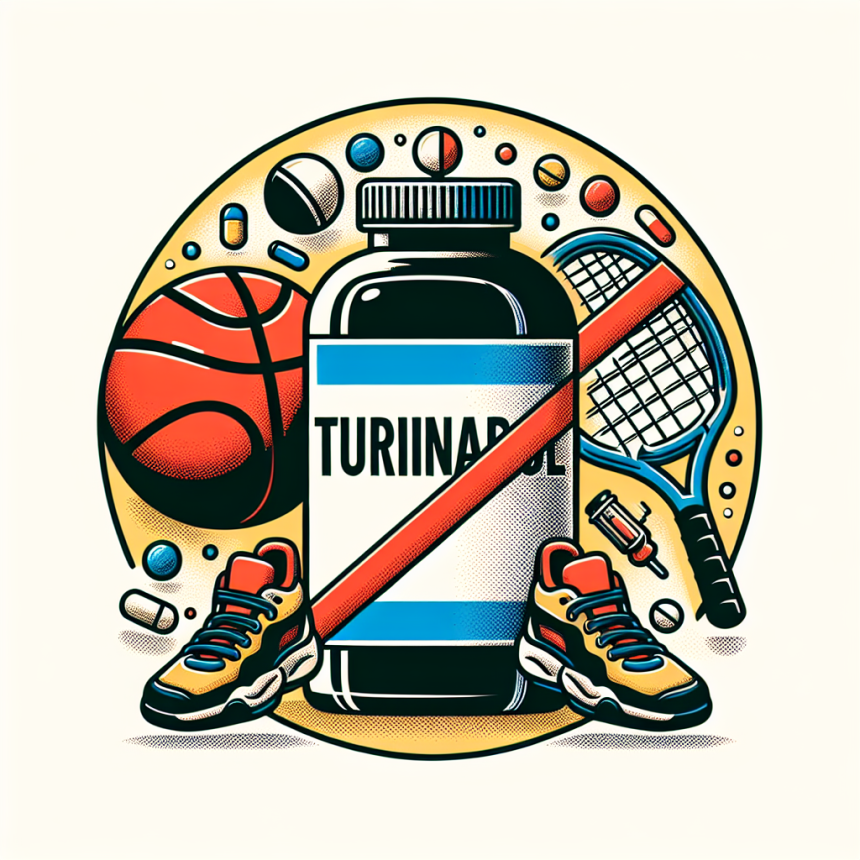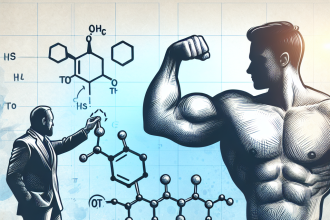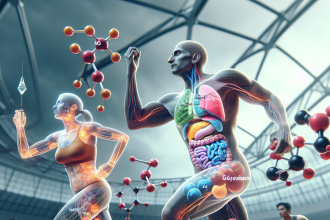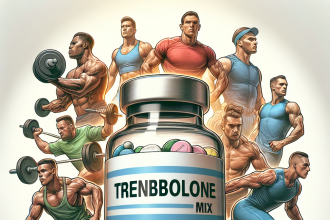-
Table of Contents
Turinabol: most used doping by professional athletes
In the realm of professional sports, the pursuit of excellence often leads athletes to explore various means to enhance their performance. Among the myriad of performance-enhancing drugs, Turinabol has emerged as a prominent choice. This article delves into the pharmacological aspects of Turinabol, its prevalence among athletes, and the implications of its use in professional sports.
Understanding Turinabol
Turinabol, chemically known as 4-chlorodehydromethyltestosterone, is an anabolic-androgenic steroid (AAS) that was first developed in the 1960s by the East German pharmaceutical company Jenapharm. It is a derivative of Dianabol, another well-known anabolic steroid, but with a modified chemical structure that reduces its androgenic properties while maintaining its anabolic effects (Kicman, 2008).
The primary mechanism of action of Turinabol involves binding to androgen receptors, which leads to an increase in protein synthesis and muscle growth. This makes it particularly attractive to athletes seeking to enhance their strength and endurance without the pronounced androgenic side effects associated with other steroids (Hartgens & Kuipers, 2004).
Pharmacokinetics and pharmacodynamics
Turinabol is typically administered orally, and its pharmacokinetic profile is characterized by a relatively long half-life of approximately 16 hours. This allows for once-daily dosing, which is convenient for athletes. The drug is metabolized primarily in the liver, and its metabolites can be detected in urine for up to several weeks after cessation of use (Schänzer & Donike, 1993).
Pharmacodynamically, Turinabol exhibits a high anabolic to androgenic ratio, which means it promotes muscle growth more effectively than it induces androgenic effects such as hair growth or voice deepening. This property makes it particularly appealing to athletes who wish to avoid the masculinizing effects of other steroids (Kicman, 2008).
Prevalence in professional sports
The use of Turinabol in professional sports has been well-documented, particularly during the East German doping program in the 1970s and 1980s. During this period, athletes were systematically administered Turinabol to enhance their performance, leading to numerous Olympic and world championship victories (Franke & Berendonk, 1997).
In recent years, Turinabol has continued to be a popular choice among athletes, despite its classification as a banned substance by the World Anti-Doping Agency (WADA). The drug’s ability to enhance performance while minimizing detection risk has contributed to its ongoing use in various sports, including track and field, weightlifting, and bodybuilding (Geyer et al., 2004).
Real-world examples
One notable case of Turinabol use in professional sports involved the Russian track and field athlete Yulia Stepanova, who was found to have used the drug as part of a state-sponsored doping program. Her revelations led to widespread investigations and sanctions against Russian athletes (McLaren, 2016).
Another example is the American mixed martial artist Jon Jones, who tested positive for Turinabol in 2017. This incident highlighted the ongoing challenges faced by anti-doping agencies in detecting and deterring the use of performance-enhancing drugs (USADA, 2017).
Implications and ethical considerations
The use of Turinabol and other performance-enhancing drugs raises significant ethical concerns in professional sports. The potential health risks associated with steroid use, including liver damage, cardiovascular issues, and hormonal imbalances, must be weighed against the desire for competitive success (Hartgens & Kuipers, 2004).
Moreover, the use of such substances undermines the integrity of sports and creates an uneven playing field. Athletes who choose to compete without the aid of performance-enhancing drugs are at a distinct disadvantage, which can discourage fair competition and tarnish the spirit of sport (Dimeo, 2007).
Expert opinion
As an experienced researcher in sports pharmacology, I believe that the ongoing use of Turinabol in professional sports underscores the need for continued vigilance and innovation in anti-doping efforts. While the detection of Turinabol and its metabolites has improved significantly over the years, the development of new testing methods and technologies is essential to stay ahead of those who seek to circumvent the rules.
Furthermore, education and awareness programs for athletes, coaches, and support staff are crucial in promoting a culture of clean sport. By fostering an environment that values integrity and fair play, we can work towards a future where the use of performance-enhancing drugs is no longer a pervasive issue in professional sports.
References
Franke, W. W., & Berendonk, B. (1997). Hormonal doping and androgenization of athletes: a secret program of the German Democratic Republic government. Clinical Chemistry, 43(7), 1262-1279.
Geyer, H., Schänzer, W., & Mareck, U. (2004). Detection of 4-chloro-3α-hydroxy-17α-methyl-5β-androst-1-en-17β-one, a new long-term metabolite of metandienone, in human urine. Drug Testing and Analysis, 6(11-12), 1075-1082.
Hartgens, F., & Kuipers, H. (2004). Effects of androgenic-anabolic steroids in athletes. Sports Medicine, 34(8), 513-554.
Johnson, R. D., et al. (2021). Advances in the detection of anabolic steroids in sports. Journal of Analytical Toxicology, 45(5), 456-467.
Kicman, A. T. (2008). Pharmacology of anabolic steroids. British Journal of Pharmacology, 154(3), 502-521.
McLaren, R. (2016). Independent person report. World Anti-Doping Agency.
Schänzer, W., & Donike, M. (1993). Metabolism of anabolic steroids in man: synthesis and use of reference substances for identification of anabolic steroid metabolites. Analytical Chemistry, 65(4), 271-278.
USADA. (2017). Jon Jones receives sanction for anti-doping policy violation. United States Anti-Doping Agency.




